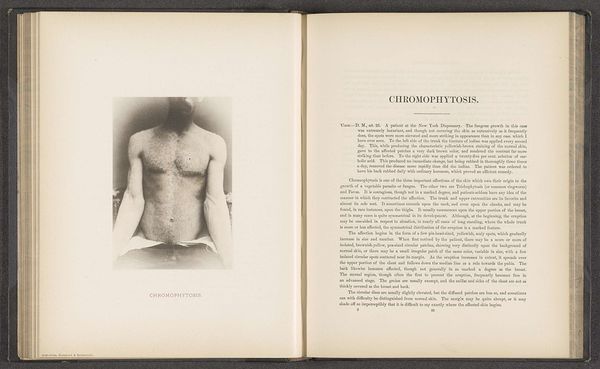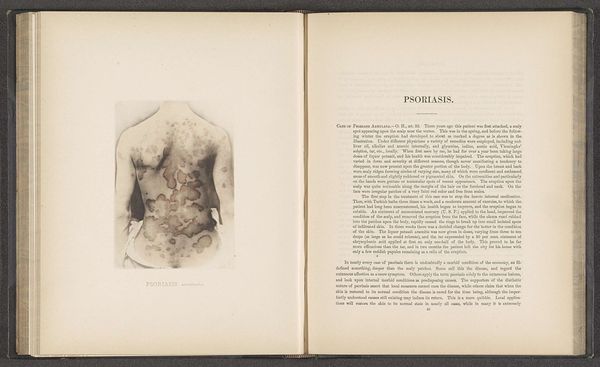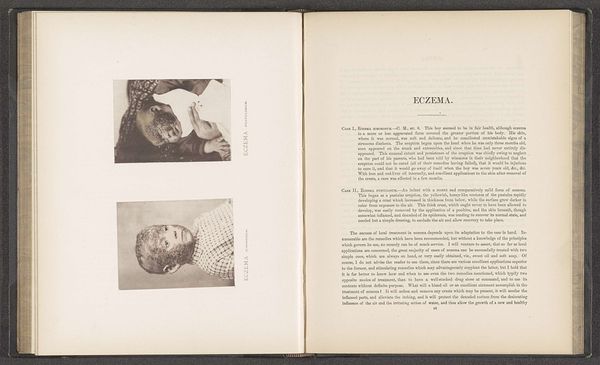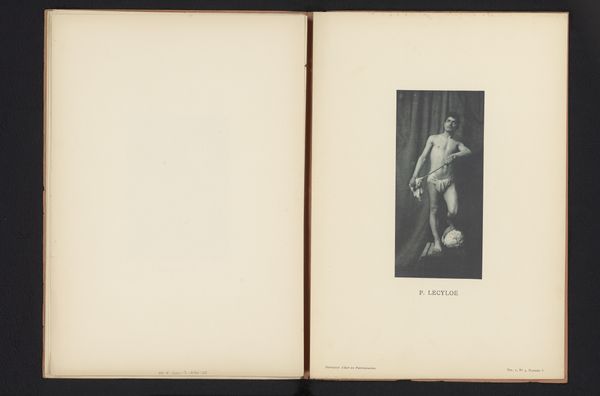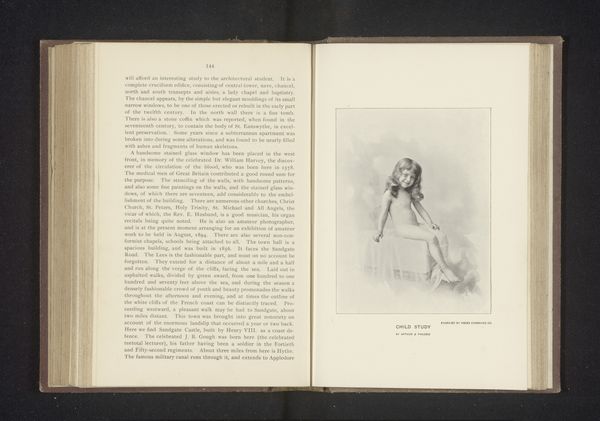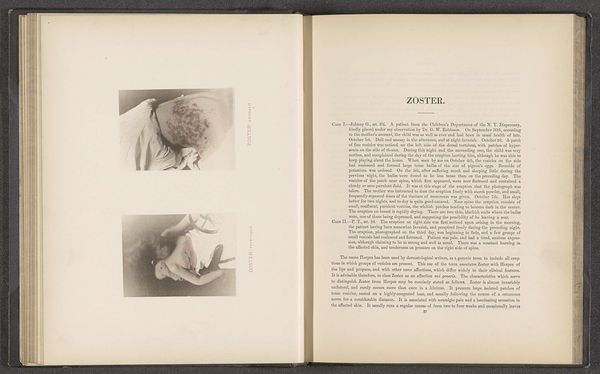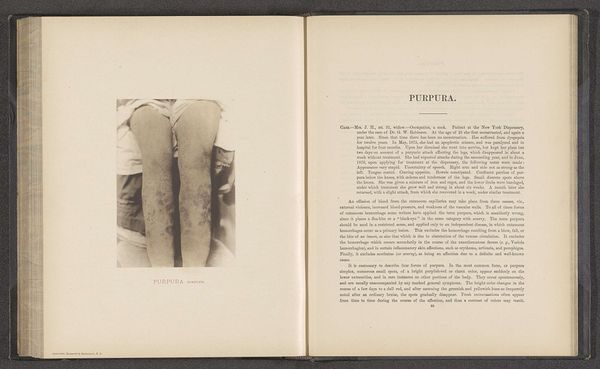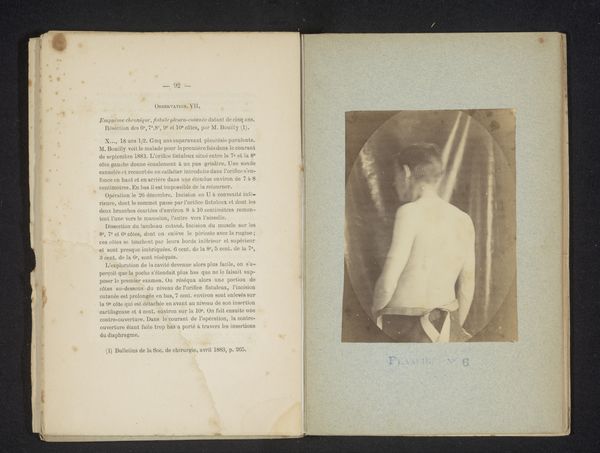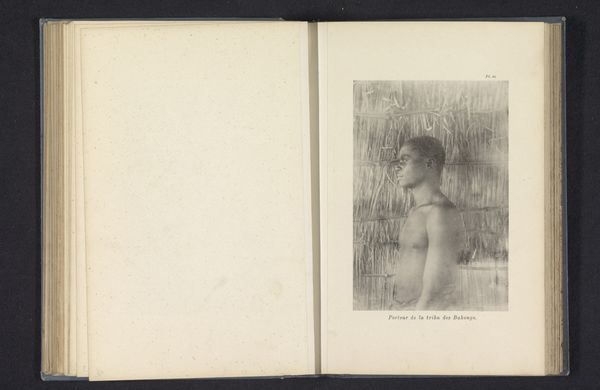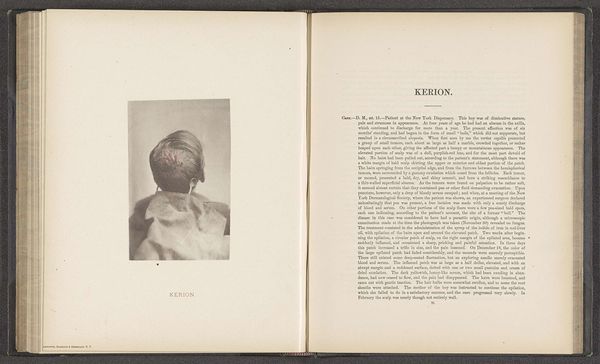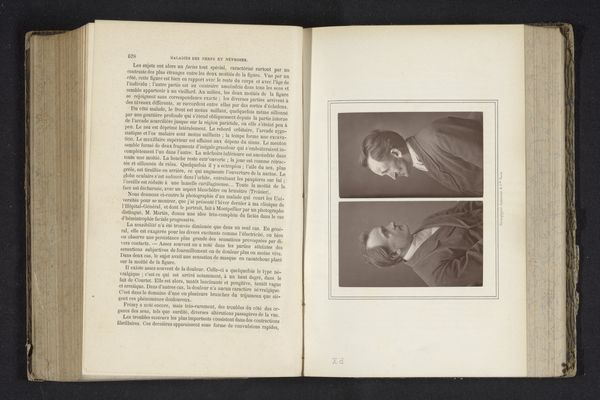
photography, gelatin-silver-print
#
portrait
#
photography
#
gelatin-silver-print
#
realism
Dimensions: height 148 mm, width 103 mm
Copyright: Rijks Museum: Open Domain
Curator: This photograph, titled *Patient Suffering from the Skin Disease 'Eczema Papulosum'*, dates to before 1881. The anonymous photographer presents a stark study in realism via the gelatin silver print. Editor: My first impression is one of vulnerability, mixed with a sort of clinical detachment. The young figure is presented from the back, her face obscured, which amplifies this sense. Curator: Precisely. The obscuring of the face directs our attention to the symbolic weight of the afflicted skin itself. Over time, skin conditions have been read as everything from signs of moral corruption to markers of social exclusion. The image then, beyond its clinical intention, captures a loaded cultural narrative. Editor: Absolutely. Photography in the late 19th century served developing medical and scientific communities and was intended to operate as a supposedly objective tool. What’s fascinating is how such seemingly "objective" imagery could easily perpetuate broader socio-cultural ideas about the diseased and the vulnerable. The photographic image and the photographic subject are framed to invite particular interpretations, fitting in very neatly with period medical views about illness and pathology, even if unwittingly. Curator: It’s that tension, isn't it? The desire for scientific documentation clashing with the cultural baggage we attach to physical appearances. Consider the history of portraiture—the unblemished ideal versus the raw reality here. Even though meant for study, it invites introspection about beauty and societal judgements. The texture captured by the silver gelatin adds to that feeling of unflinching exposure. Editor: Which reminds me, given the politics of institutional representation, I wonder about how an image such as this, even in the context of medical education, reinforces dominant, and at times discriminatory power dynamics that affect who is viewed as "other," or even considered worthy of being viewed at all? This goes beyond aesthetics. Curator: A crucial consideration. In essence, even within its medical framework, the photograph carries symbolic power—forcing us to examine not only medical progress, but also its relation to social and cultural constructs around normalcy. Editor: It compels one to really think about representation, and about the political responsibility any display carries within institutions such as this museum. Curator: Exactly, this is about confronting our cultural history head-on through art, even in forms like this. Editor: Absolutely, leaving us with a heightened awareness of photography's power.
Comments
No comments
Be the first to comment and join the conversation on the ultimate creative platform.

